|
FOCUS / FORUM
INDEX
|
 |
In 2008, the Forum Comment,
was relaunched as the Focus
reflecting the closer comment from
NEMP and the panel of educators. |
 |
|
Main Index for Focus / Forum
Introduction
to Focus / Forum
He
Whakaputanga Whakaaro –
Introduction for Mäori
Medium forums
|
| Forums by year of assessment |
|
|
|
Science
Art
Graphs, Tables & Maps
|
|
|
|
Music
Aspects of Technology
Reading & Speaking |
|
|
|
Information
Skills
Social Studies
Mathematics |
|
 |
|
Listening
& Viewing
Health & Phys. Ed.
Writing |
|
| Forums for Mäori Medium |
|
|
|
Science
Art
Graphs, Tables & Maps
|
|
|
|
Music
Aspects of Technology
Reading & Speaking |
|
|
|
Information
Skills
Social Studies
Mathematics |
|
 |
|
Listening
& Viewing
Health & Phys. Ed.
Writing |
|
|
|
|
|
 |
|
|
|
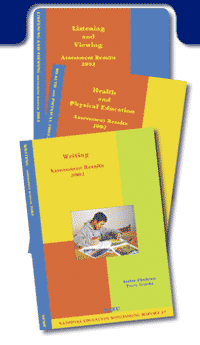
CLICK
on reports above to go directly
to comments |
|
FORUM
PARTICIPANTS
Airini
Sandie Aikin
Anne Alkema
Susan Apathy
Primrose Appleby
Jane Barton
Jeanne Biddulph
Diane Black
Raiha Boyes
Lisette Burrows
Bernard Butler
Claire Cockburn
Martin Connelly
Ian Culpan
Warwick Elley
Barbara Ferguson
Andy Fraser
Sharon Fuemana
Brent Gray
Stephanie Greaney
Ray Griffiths
Julie Hepburn
Barbara Hollard
Christine Johnstone
Diane Leggett
Emily McDonagh
Sue McDowell
Kathleen Metcalfe
Liz Patara
Chanda Pinsent
Jenny Robertson
Joy Simpson
Juliet Small
Gary Sweeney
David Tait
Gillian Tasker
Martin Te Moni
Bill Ussher
Cathy Venn
Jane White
Julie Wolbers |
|
The second
four-year cycle of national monitoring started in 1999.
Results from this second cycle allowed reporting of achievement
trends over four year intervals, by comparing performances
on tasks used in both the current and previous cycles of
assessment.
The three reports on the 2002 assessment results were considered
by a national forum of teachers, subject specialists, representatives
of national organizations and government agencies. Their
comments highlighted what students were generally doing well,
and those areas where improvements were desirable. In turn,
individual schools and teachers benefited from examining
the NEMP results and considering the forum’s comments
as they applied the findings to their own students.
The help of principals, teachers and Boards of Trustees in
making NEMP reports and related Forum Comments widely
known is encouraged and appreciated.
 |
Click
the Access Task icon for more information
about those tasks which have been
made available to schools since
2001. |
|
|
|
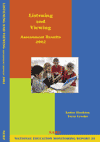 CLICK for
full report CLICK for
full report
|
GOOD
NEWS – LISTENING
• Results from the 2002 assessments confirm that
most students are able to identify, recall and comprehend
factual information.
• Students were very good at listening when there
was a practical requirement to follow instructions
with hands on responses on paper or computer.
• There has been a 15–20 percent reduction
in disparities in listening comprehension between Mäori/non-Mäori,
and low/high decile schools. |
 GOOD
NEWS – VIEWING GOOD
NEWS – VIEWING
• There have been slight gains since 1998 for both
year groups.
• Areas in which students demonstrated strength
were observation and recall of factual information.
• There has been a reduction in the disparity in
performance on viewing tasks between boys and girls by
15 percent at both year levels.
• There has been a large reduction in the disparity
between Mäori and non-Mäori at both levels
(25–30 percent) and an even larger reduction between
the low/high decile schools (25–50 percent).
|
 |
CONCERNS
•
Although there have been some reductions in disparities,
the overall results show little or no improvement since 1998.
• Pasifika students are performing at a much lower
level on tasks, particularly listening tasks, than other
ethnic groups.
• The 2002 results suggest the areas of critical thinking,
including making inferences and justifications about the
underlying meanings in messages, still require further development.
|
LOOKING
AHEAD –
PRIORITIES FOR PROGRESS
• Further concerted attention to closing ethnic, socio-economic
and gender achievement gaps.
• Exploring strategies across a range of contexts to
help enhance the development of deeper thinking and understanding.
An analysis of the listening/viewing tasks suggests that emphasis
on critical literacy at all levels is required. |
|
HEALTH
& PHYSICAL EDUCATION 2002 |
 |
|
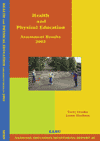 CLICK for
full report CLICK for
full report
|
GOOD
NEWS
• Both year 4 and year 8 students continue to have
very positive attitudes towards physical education. It
is the second most popular subject for year 4 students,
and the most popular for year 8 students.
• Although health education is less popular than
some other school subjects, most students like doing
health education at school, and think that it is useful
for them in and out of school.
|
• Students’
achievements in physical education were similar in high,
medium and low decile schools.
• There has been a reduction of disparity in performance
on health tasks between Mäori and non-Mäori year
8 students. Non-Mäori students performed better than
Mäori students on 27 percent of year 8 health tasks
in 1998, but only on 6 percent in 2002.
• There was a high level of enthusiasm for and perceived
competence in physical education among year 8 Pasifika students.
• By year 8, more students are recognising the importance
of a broader range of qualities necessary for personal health,
rather than just focussing on food and aerobic fitness.
• Many students identify nice people (friends, other
students and teachers) as key contributors to a happy school,
alongside quality learning programmes and good recreational
opportunities.
• Current campaigns about fire safety and sun safety
appear to have communicated their main messages fairly effectively,
although students’ responses are often limited to a
single safety message rather than a broad understanding. |
 |
CONCERNS
•
Many students showed limited understanding of their own role
in contributing to the well-being of others.
• Many students were unable to satisfactorily identify
safety rules particular to different swimming environments
(pools, rivers, beaches).
• Low scores in some tasks relating to outdoor activities
may be a consequence of school constraints on outdoor activities
stemming from safety considerations.
• Students growth in understanding of all dimensions
of well-being/hauora (social, emotional, spiritual, physical
and intellectual) is not evident in many tasks.
• Many students had limited strategies for dealing with
mental health issues such as those related to friendships,
grief and loss, and self-feelings. It is of particular concern
that the performance of boys was weaker than girls in this
area, with risks of male stereotypical views becoming influential.
• Students’ responses suggest that they perceive
high levels of intolerance for difference in others.
• The perception among many students that they only sometimes
do things at school that help them learn about health.
• The continuing trend of boys scoring higher than girls
on more than half of all physical education tasks.
• About a third of students do not know what their teacher
thinks about how good they are at physical education.
• In all strands, the improvement from year 4 to year
8 was substantially lower in 2002 than in 1998.
|
LOOKING
AHEAD –
PRIORITIES FOR PROGRESS
•
Developing students’ knowledge, awareness and understandings
of the interrelationships and everyday meanings of all dimensions
of well-being/hauora (social, emotional, spiritual, physical
and intellectual).
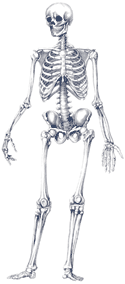 •
Giving comprehensive attention to helping students learn
about and build strategies for mental health. •
Giving comprehensive attention to helping students learn
about and build strategies for mental health.
• Utilising students’ strongly positive attitudes
towards physical education to benefit their achievement across
other areas of learning.
• Helping students to enquire into and know about societal
attitudes, values beliefs and practices, and to think critically
about their effects on well-being.
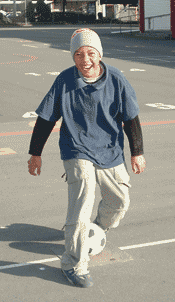 • Using ‘game
sense’ approaches for engaging students in
higher order thinking in physical education contexts. • Using ‘game
sense’ approaches for engaging students in
higher order thinking in physical education contexts.
• Promoting inclusiveness in health and physical education
programmes in ways that address gender and equity issues
in both attitudes and performance. |
|
|
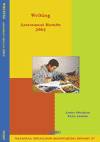 CLICK for
full report CLICK for
full report
|
GOOD
NEWS
• The proportion of tasks where year 4 boys performed
worse than girls decreased from 79 percent in 1998 to
39 percent in 2002.
• The proportion of tasks where Mäori students
scored lower than non-Mäori decreased from 46 percent
in 1998 to 36 percent in 2002.
• The proportion of tasks where year 4 students
from low decile schools scored less than high decile
decreased from 83 percent in 1998 to 72 percent in 2002. |
• On average, about 20 percent more year 8 students
than year 4 students succeeded with components of writing
tasks. This applied almost equally to expressive writing,
functional writing, and writing conventions.
• About 50 percent more year 8 students than year 4
students were able to follow a style of writing appropriate
to the reporting of events.
• Year 8 students are showing success in writing skills
associated with communication technology.
• Writing stories was the most popular writing option
at school and at home for both year 4 and year 8 students.
• Mäori and Pasifika students were more positive
than other students about how good they thought they were
at writing.
• Year 4 Mäori and Pasifika students reported
greater use of computers for writing at school than did other
students.
|
 |
CONCERNS
• As was the case four years earlier, the performance of
boys was lower than girls on 88 percent of year 8 tasks, and
boys were less positive in their attitudes to writing than girls.
Despite the marked improvement at year 4, a gap remains on 39
percent of tasks between boys and girls.
• In schools with high proportions of Pasifika students,
both Mäori and Pasifika students performed less well than
other students on about 25 percent of tasks.
• On most tasks at both year levels, students in low decile
schools performed less well than students in high decile schools.
• Writing ranked 7th among the 12 most popular school subjects
at year 4, and 10th at year 8.
• The results show considerable scope for improvement in
editing, punctuation, spelling and grammatical correctness. For
example, only about a third of year 4 students gained more than
half correct in punctuation, and only about a third of year 8
students corrected 60 percent or more of grammatical errors.
• Most students were unable to achieve the clarity, personal
feeling or humour that distinguished top quality expressive writing.
• Many students did not follow standard conventions for
setting out letters, postcards and advertisements.
• Students had difficulty analysing a task that required
them to give instructions, then writing those instructions into
a logical order.
• Many year 4 students believe that to do better in writing,
the most important thing they need to work on is neatness. They
see this as more important than editing, grammar, spelling, punctuation,
enjoyment or increasing their knowledge about the topic.
|
 LOOKING
AHEAD – LOOKING
AHEAD –
PRIORITIES FOR PROGRESS
• Giving students a broad range of writing experiences
that help build their knowledge of writing conventions and formats
such as those used for letters, postcards and advertisements.
• Ensuring that students have adequate background knowledge
to support a particular piece of writing and a specific focus/purpose
for that writing, while also teaching what is needed for that
purpose, and providing feedback specific to the purpose.
• Providing students with regular modelling and oral feedback
in ways that encourage the incremental improvement of important
writing skills, and giving students opportunities for purposeful
peer discussion and feedback about their writing.
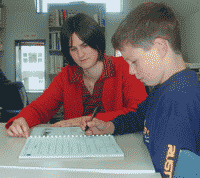
• Strengthening
teachers’ personal skills and understandings of written
English and its conventions through quality pre-service and
in-service professional development.

|
|
|
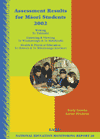 CLICK for CLICK for
Assessment Results for Mäori Students 2002 |
The 2002 NEMP assessments provide some encouraging news
for Mäori student achievement. The reports present
evidence of noteworthy gains between 1998 and 2002.
Year 4 Mäori students performed comparably with
non-Mäori students on 80 of the 108 tasks across
all three reports. Year 8 Mäori students performed
comparably with non-Mäori students on 96 of 127
tasks.
It is interesting to note that the remaining disparity
between non-Mäori and Mäori is now substantially
smaller than the performance disparity between children
in low and high decile schools, except in physical education
where most disparities were small. |
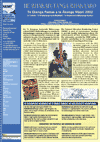 CLICK for CLICK for
Te Whakaputanga
Whakaaro –
Mäori Forum Comment |
Mäori
students performed notably well on tasks with contexts
they particularly associated with.
 |
|
 |
LISTENING
& VIEWING
GOOD NEWS
• There have been gains in listening
and viewing for Mäori students from1998
to 2002 at both year levels.
• The greatest gains for Mäori
students, at both year levels, were in
viewing. In 2002 Mäori year 8 students
performed comparably with non-Mäori
students on 82 percent of listening tasks
and 67 percent of viewing tasks.
CONCERNS
• As with non-Mäori students,
the areas where Mäori students
most need to improve include analysis,
synthesis and evaluation of information
they hear and see.
|
LOOKING
AHEAD –
PRIORITIES FOR PROGRESS
• Providing students with plenty
of opportunities to build vocabulary,
gain shared understandings, interpret,
make judgements, and draw conclusions.
• Providing plenty of practice
of these skills in different forums
and contexts. |
|
|
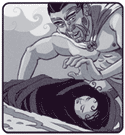 WRITING WRITING
GOOD NEWS
• Mäori year 4 students made useful
gains from 1998-2002. In 1998, they performed comparably
on 54 percent of tasks and by 2002 they were performing
comparably on 64 percent of tasks.
• Compared with other year 4 students, Mäori
students were more positive about their writing
skills, thought their parents read their writing
more frequently, and reported using computers at
school more often for writing.
 CONCERNS CONCERNS
• Year 8 Mäori students performed
worse than other students on two-thirds of
writing conventions tasks.
|
LOOKING
AHEAD –
PRIORITIES FOR PROGRESS
• Providing frequent modelling, discussion,
practice and instructional feedback with
different texts, and giving explicit attention. |
|
 |
HEALTH
& PHYSICAL EDUCATION
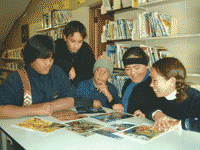 GOOD
NEWS GOOD
NEWS
•
In 2002, Mäori and non-Mäori
students performed comparably on 83 percent
of health tasks at year 4 and 95 percent
of tasks at year 8. Four years earlier,
Year 8 performed comparably on just 73
percent of tasks.
• In 2002 Mäori students outperformed
non-Mäori on 10 percent of physical
education tasks at both year levels.
|
CONCERNS
•
Like other year 4 students, Mäori students did
less well on tasks dealing with relationships. This
might indicate that Mäori children struggle to
verbalise their ideas and concerns with adults.
• The two tasks that year 8 Mäori students
did less well concerned the handling of stress and
healthy eating. Perhaps some situations are not perceived
by Mäori students to be stressful. |
|
LOOKING
AHEAD –
PRIORITIES FOR PROGRESS
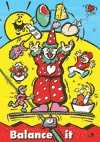 •
Providing students with opportunities to discuss their
relationships in safe environments. Both year levels
would also benefit from plenty of opportunities for
focussed discussion which builds and uses vocabulary
specific to topics under consideration. •
Providing students with opportunities to discuss their
relationships in safe environments. Both year levels
would also benefit from plenty of opportunities for
focussed discussion which builds and uses vocabulary
specific to topics under consideration. |
|
|
 |
|
|